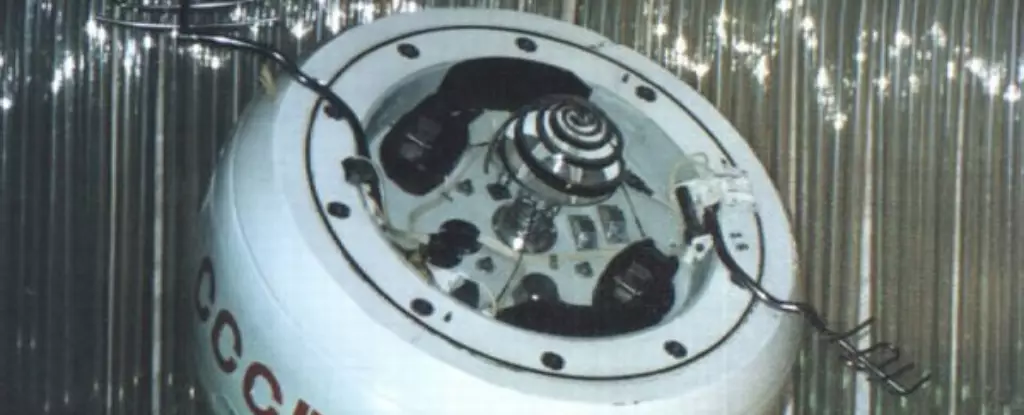In a world where rapid technological advancements often overshadow historical milestones, the imminent reentry of Kosmos-482 serves as a poignant reminder of humanity’s earlier explorations. Launched on March 31, 1972, from the Baikonur Cosmodrome in Kazakhstan, this spacecraft represents a bygone era of space exploration, encapsulating the spirit of the Cold War. Over fifty years later, this relic of the Soviet space program prepares for a fiery descent back to Earth, marking the end of a long, silent voyage through the cosmos.
The Kosmos-482 mission was originally intended for a journey towards Venus, a goal that was not only ambitious but also indicative of the scientific aspirations during the height of the space race. In a tantalizing twist of fate, shortly after its launch, a timer anomaly rendered its mission abortive, leaving it stranded in low Earth orbit. Despite the failure, the mission’s identity remained – identified only as Kosmos-482, a designation laden with the historical weight of its time. This decision to obscure failures under a veil of secrecy exemplified the intense national pride and rivalry of the era.
The Tactics of the Cold War
The Cold War permeated every aspect of life during the 1960s and 1970s, including the once-secretive Soviet space program. While the West was often apoplexy with detail regarding their missions, the Soviets operated under a shroud of opacity, leading to a dearth of public knowledge about failed ventures like Kosmos-482. Many of these missions were ultimately stripped of acknowledgment, their results and failures assiduously hidden from the public eye. The cloak-and-dagger tactics regarding space exploration were not merely about science; they were steeped in political ambition, with each nation vying for supremacy in an outwardly peaceful yet fiercely competitive arena.
The Kosmos-482’s inability to achieve its intended mission is a microcosm of the many setbacks faced by the Soviet space program. Though the Venera missions to Venus ultimately found success, Kosmos-482 was a grim prelude to future endeavors. Its precursor, the successful Venera 8, launched just days before, only adds a layer of irony to the tale. The juxtaposition of triumph and failure succinctly encapsulates the challenges explored by daredevil scientists and engineers tasked with realizing humanity’s aspirations to explore celestial bodies.
The Risks of Reentry
As Kosmos-482 prepares to plunge back into the Earth’s atmosphere, discussions surrounding space safety and environmental impact have gained renewed momentum. The uncontrolled reentry of a 500-kilogram relic presents little risk to the general populace, primarily due to the object’s size — a mere fraction of the weight of past objects like the Upper Atmosphere Research Satellite (UARS). Still, the notion of an antiquated space probe reentering at high speed is a sobering reminder of the increasing amounts of space debris surrounding our planet.
Space enthusiasts eagerly await the reentry, some speculating whether this vintage lander, engineered to withstand the treacherous atmosphere of Venus, might endure reentry through our own. The parameters indicate a long and shallow trajectory — uncertain factors that pose a significant challenge to predictions. Yet as the anticipation builds, the excitement is tempered with a solemn awareness of the expanding threat of space debris, a burden that seems to grow with each passing year.
A Crowded Sky and Future Implications
The continued proliferation of satellites, particularly in low Earth orbit, speaks volumes about the necessity for sustainable practices in space exploration. With giants like SpaceX, Amazon’s Kuiper Project, and OneWeb launching satellites at an unprecedented rate, the environment surrounding Earth is becoming increasingly crowded and hazardous. The case of Kosmos-482 highlights the impending crisis, as outdated spacecraft and fragmented remnants of past missions coexist with advanced technological marvels.
In the coming years, the situation regarding space junk may reach a tipping point, prompting international conversations about regulations and clean-up strategies. As Kosmos-482 embarks on its final journey, it serves as a grim harbinger of what might come if proactive measures are not taken. Every satellite launched carries with it not just the promise of innovation and connectivity but also an implicit responsibility towards keeping our shared cosmic environment intact.
Through the demise of Kosmos-482, we are gifted a moment of reflection upon the intertwined narratives of human aspiration and ecological stewardship in space exploration. This mission is not merely an end, but a compelling chapter in the ongoing story of our attempts to reach beyond Earth. As we witness the glitching glory of this ancient satellite’s farewell, we are reminded of our responsibility to uphold the integrity of the cosmos for future generations.

